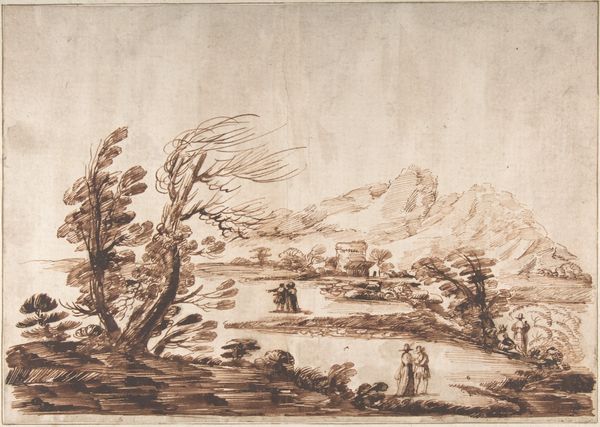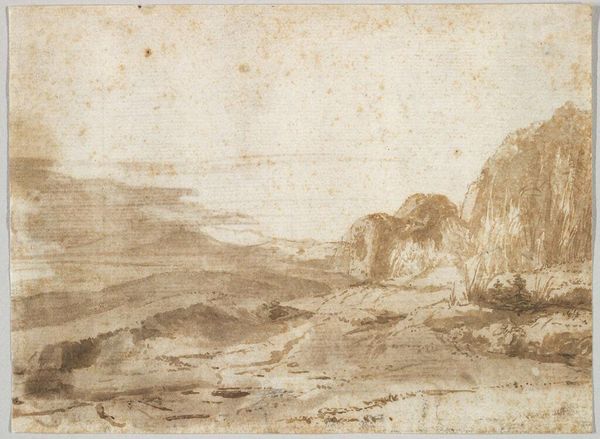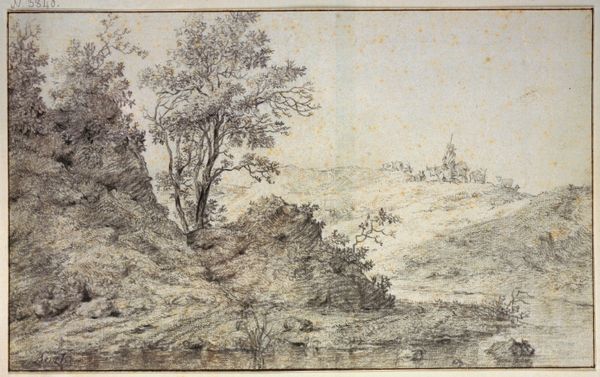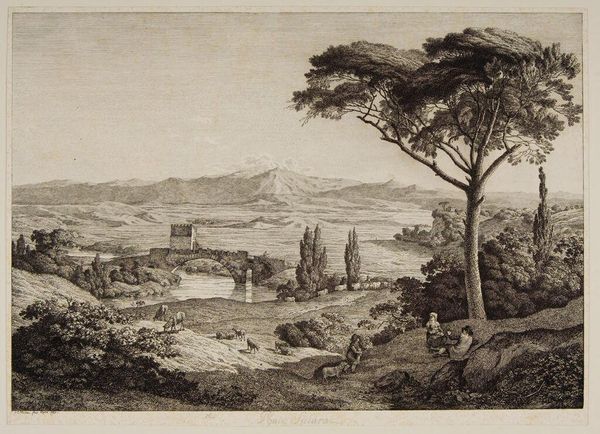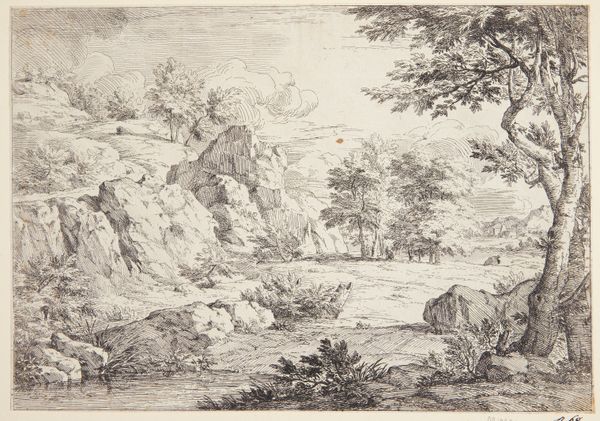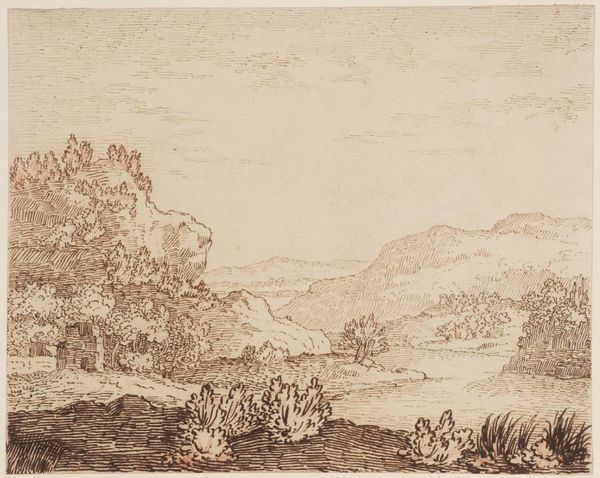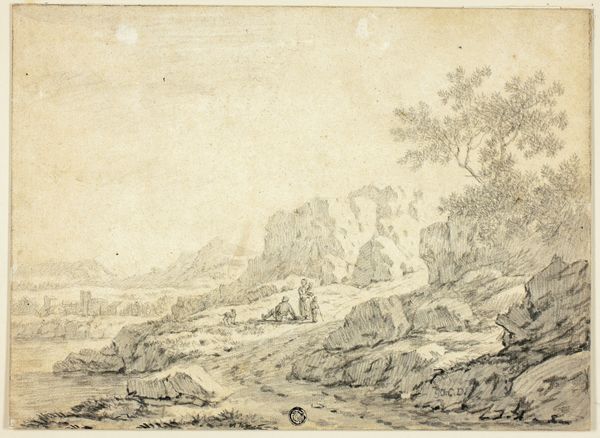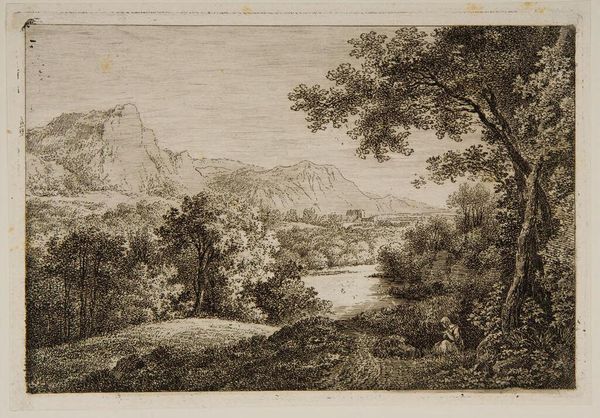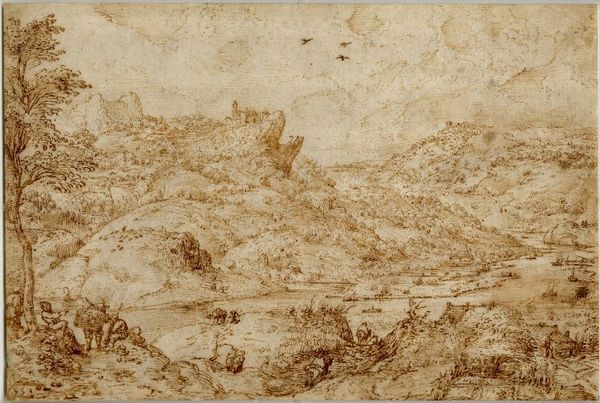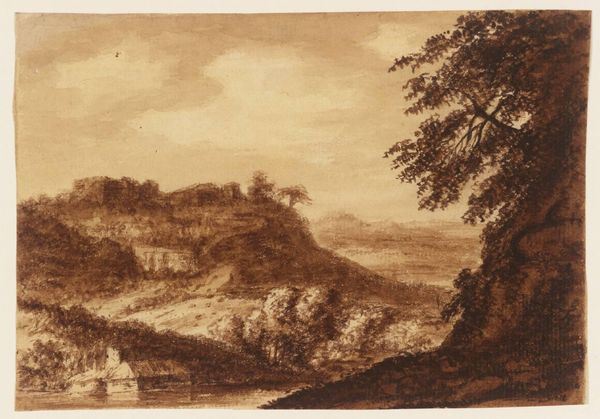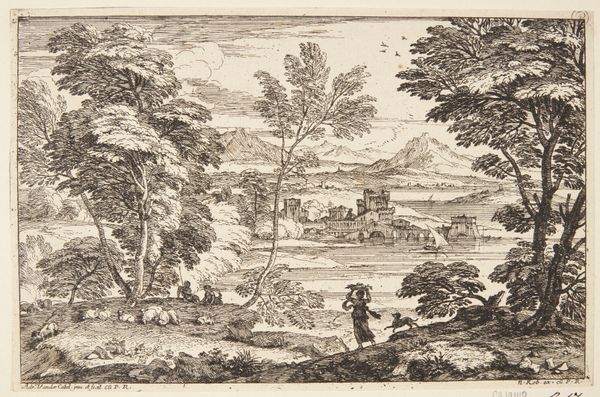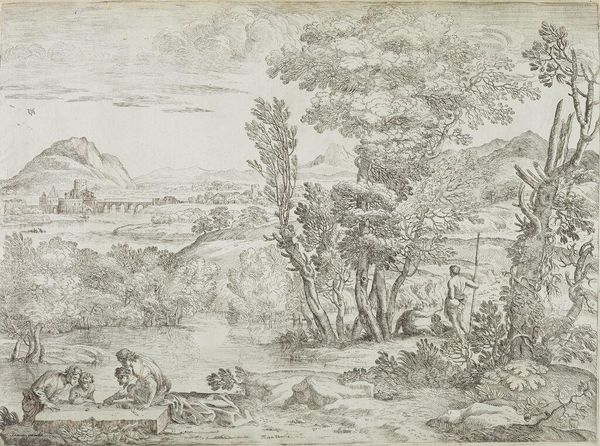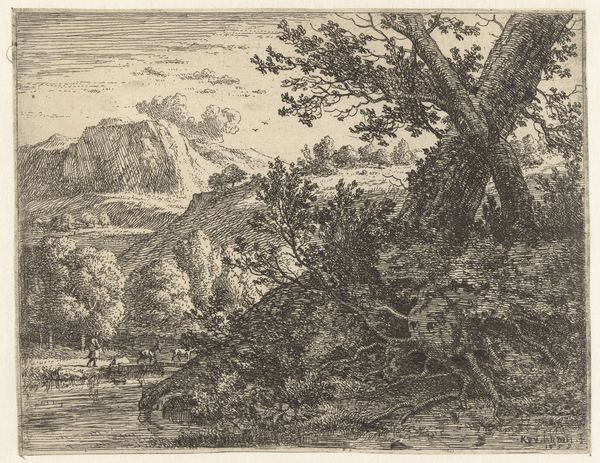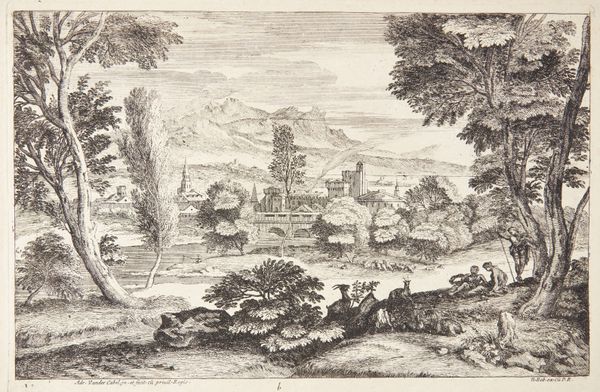
Dimensions: 27 x 38.7 cm
Copyright: Public domain
Curator: At first glance, it feels like a memory fading into sepia. Is this landscape tinged with nostalgia, perhaps? Editor: We are looking at “Landscape Study: Development from a Blot,” a work created around 1770 by Joseph Wright of Derby. It is rendered in ink, watercolor and charcoal on paper. Curator: The subdued palette really draws my attention. The monochromatic quality highlights the subtle tonal variations; look at how he achieves depth with the lightest washes fading into the stronger lines in the foreground. It's very skillful. Editor: Indeed. Wright was deeply involved in the Enlightenment's empirical pursuits. This 'blot' technique, advocated by Alexander Cozens, was a popular method at the time—a way of tapping into the imagination through abstract forms that would suggest a composition. Curator: So the ‘blot’ is more than just accidental; it's a launchpad for artistic exploration! You can see the artist’s process unfolding. The Romantic movement certainly valued this emphasis on personal interpretation of the landscape. I can feel its strong influence in this artwork. Editor: The landscape as a site of both scientific study and personal feeling. Wright was moving in circles interested in the picturesque, a concept closely linked with British national identity. These landscapes speak of an idealized version of the nation. Curator: It certainly fits into a broader trend! Though, in that period we see nature increasingly conceived as a space where emotions were reflected and refined through its forms and shapes. But the very conscious composition, look at that deliberate tree placed to frame our view into the landscape! I believe, this image conveys much more. Editor: You’re right, the compositional devices shouldn't be overlooked. They highlight a level of visual literacy. Now that you mentioned it, the foliage does provide an aesthetic anchor. We find ourselves invited into the vista, carefully guided through layers of artistic and cultural meaning. Curator: And it's the blend of observation and the imposed form that provides it with such resonance still. Thanks for giving further depth to its significance! Editor: My pleasure. I leave with renewed appreciation for this interplay between method and artistry, how the Age of Reason shaped our views, even our landscapes, two and a half centuries later!
Comments
No comments
Be the first to comment and join the conversation on the ultimate creative platform.
